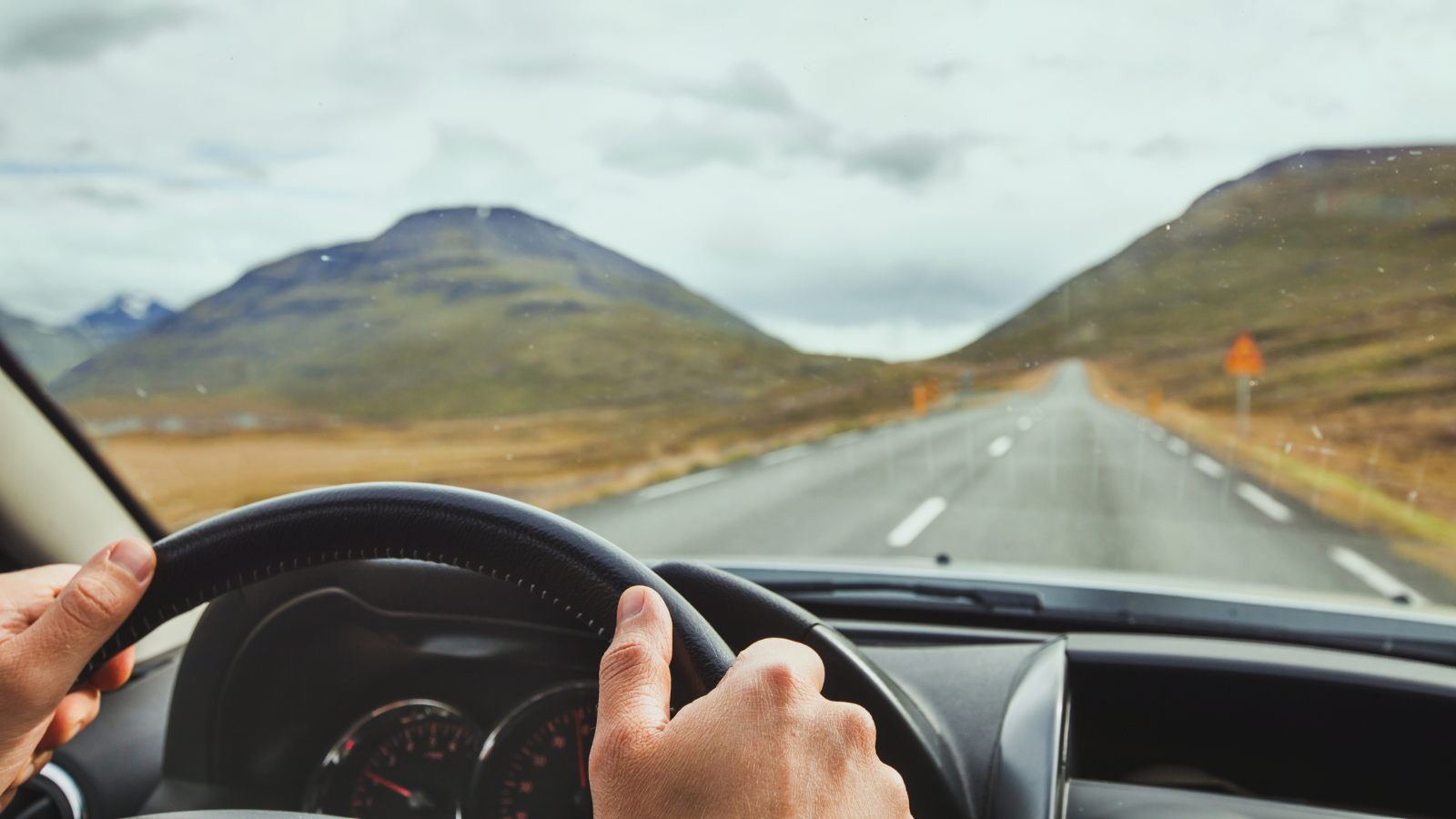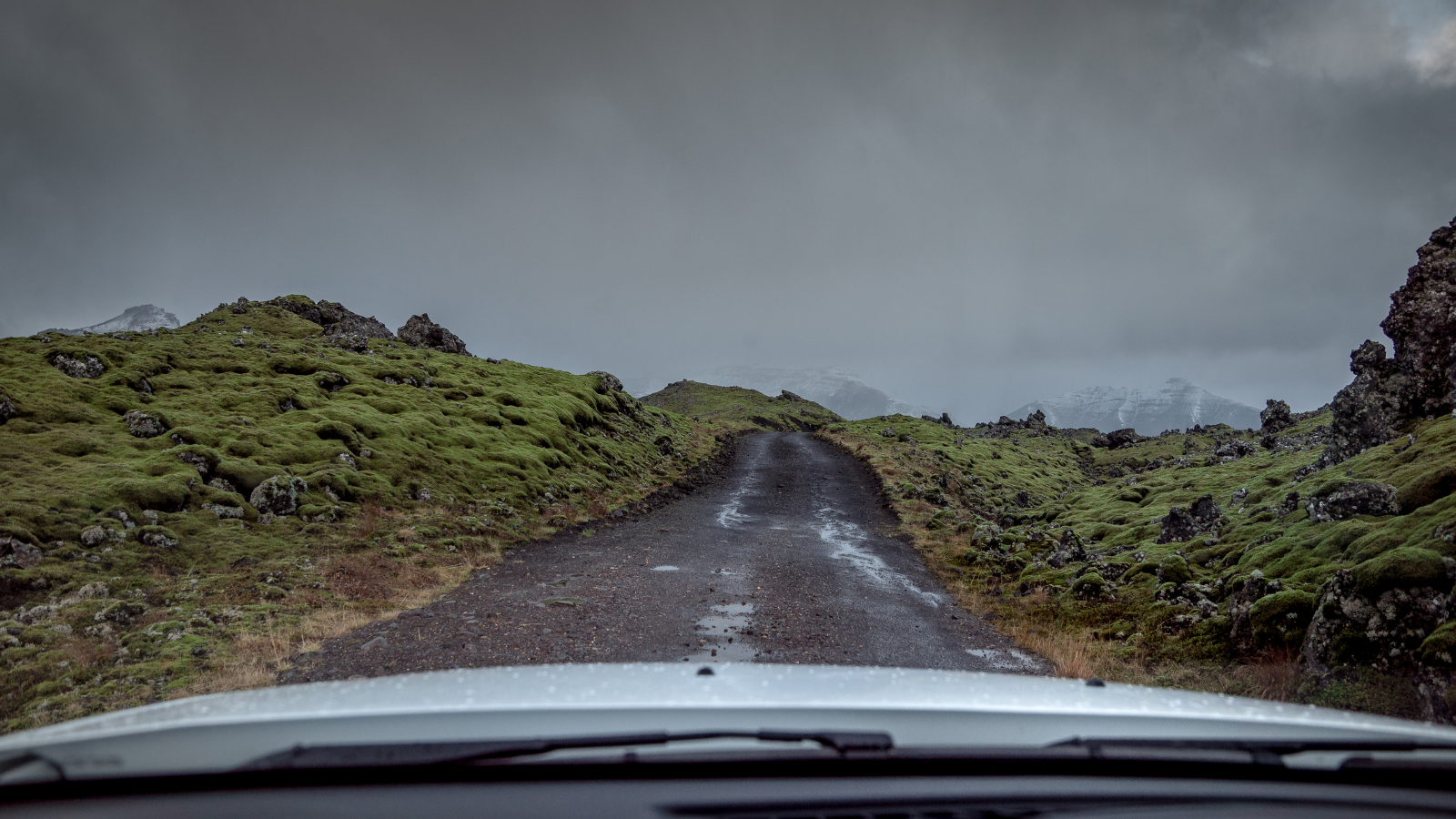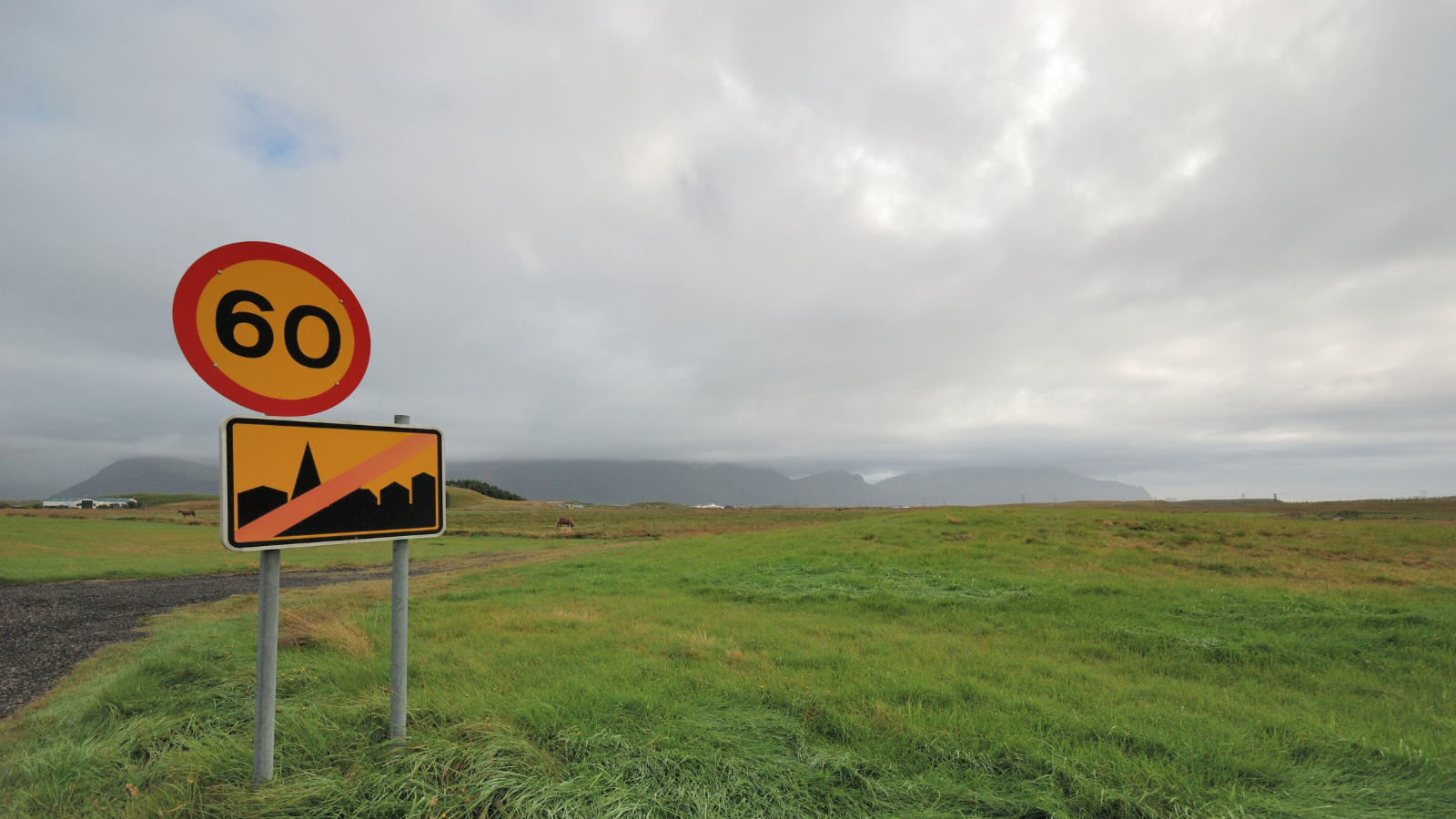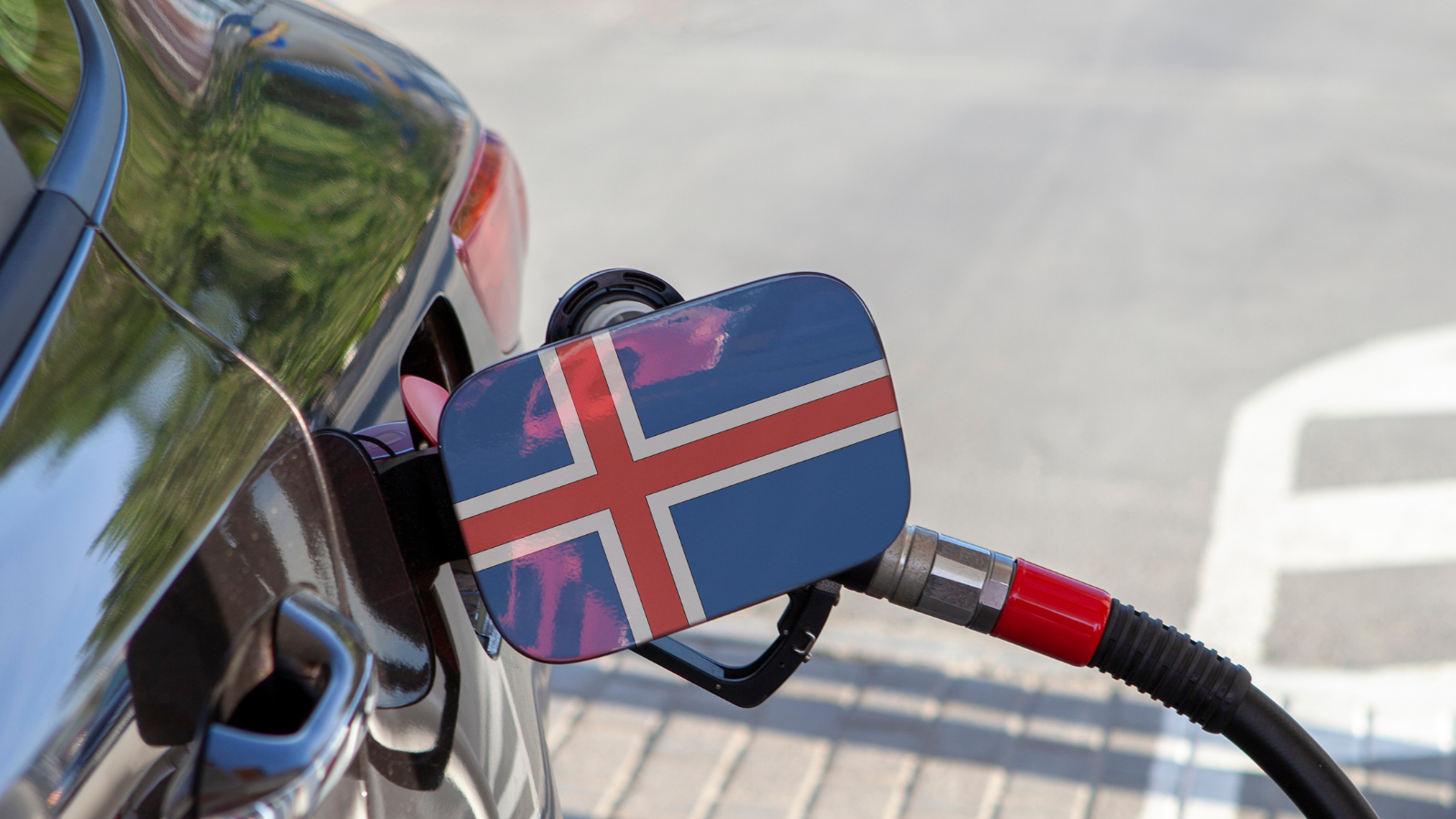Driving in Iceland
Are you planning your very own Icelandic adventure? Dreaming of an unforgettable road trip through the dramatic landscapes in the land of fire and ice? No matter how long it takes to drive around Iceland, a self-drive tour is undoubtedly one of the best ways to explore the country. Not only does driving yourself give you independence and freedom, but it also allows you to explore at your own pace. From creating your itinerary to stopping at an attraction you’ve stumbled upon, driving in Iceland can feel like a road trip of dreams.
However, when it comes to hitting the road, it’s important that first, you prepare yourself for what challenges you may come up against while driving in Iceland.
10 Things To Be Aware Of Before Driving in Iceland
From seasonal dangers like snow, sleet, strong winds, and low sun, to blind hills, free–roaming animals, and more, there are plenty of things to be aware of when taking to the road. You will also need to be aware of driving rules and regulations, where you can park, what side of the road to drive on, and how to stay safe on the roads.

1. Iceland’s Driving Rules & Regulations
Although many driving rules are similar to those of the USA, the UK, and most of Europe, Iceland does have some enforced rules to adapt to the country’s unique conditions and experiences. We’ve broken down some that are worth noting:
- Headlights must be on at all times, even during daylight hours
- Seatbelts are required for all passengers
- Children under the age of 12 are not allowed to ride in the front
- There are hefty fines for speeding and these will be tracked back to you after your vacation
- Driving off-road is strictly forbidden. If you see someone doing that, take a picture of them, make sure you get the number plate, and send it to the police.
- Cell phone use while driving is illegal
2. Types of Roads in Iceland
There are three types of roads in Iceland: Paved, gravel, and F-roads. The types of roads you should be prepared for depend on when and where you are planning on visiting.
Paved roads are relatively straightforward. If you are driving The Ring Road, most of your journey will be paved and well-maintained; however, it’s important to be aware of driving in the winter even on paved roads. Although well-maintained, there can be times when sections haven’t been resurfaced in a while, so it is worth traveling with caution.

Gravel roads are common throughout the country, and a section of the R1 is a gravel road around Eastern Iceland. Other common places to encounter gravel roads are turn-offs towards attractions or less frequently visited roads. Usually, these roads are fine for a 2-wheel drive; however, some may require a 4×4. If this is the case, it is heavily signposted.
Gravel roads are also the main cause of accidents in Iceland, and the main reason for this is speed. When a paved road turns into a gravel road, it is important to slow right down to let yourself and the car adjust to the new surface. A common thing for visitors to get wrong is not slowing down enough, which can result in an accident.
The last type of road is F-roads; these are the Highland roads and they require a high clearance 4×4 vehicle to drive on them. This is because these roads have tough terrain and sometimes require driving through rivers. These roads can be closed if deemed unsafe, and there are heavy fines for driving on them when they are.
It is also highly illegal to drive off-road in Iceland. The ecosystem is fragile, and the impact left by cars driving off-road can take hundreds of years to repair.
3. Speed Limits
Sticking to the speed limits in Iceland is paramount for a safe, enjoyable, and smooth driving experience. Different speed limits exist on different areas of roads. This is to ensure the safety and control of the vehicle as well as the speed needed to navigate the roads.
- Urban Areas: Speed limits in populated areas or urban zones are typically between 30 km/h and 50 km/h.
- Rural Roads (Paved): On paved rural roads, the speed limit is generally 80 km/h.
- Gravel Roads: The speed limit on gravel roads can vary, but it is often set at 80 km/h lower. Be cautious and adjust your speed according to road conditions.
F-Roads: F-Roads, which are Highland roads, may have specific speed limits, and they can vary depending on the terrain and conditions. Always follow posted signs and exercise caution.

4. Driving on the Right Side
Like mainland Europe and the USA, in Iceland, cars drive on the right-hand side of the road. This can make it an easy adjustment for those traveling from these countries.
5. Weather Conditions
Before heading on your Icelandic adventure, it’s vital to check weather conditions regularly. Iceland’s weather can be unpredictable, with changes happening quickly. While you are out and about, stay informed on the current forecasts and road conditions, especially during the winter months when snow and ice can impact travel.
High winds, snowstorms, or rapidly changing visibility can affect driving conditions. Being prepared and adaptable to Iceland’s changing weather will enhance your safety and allow you to make the most of your exploration in this stunning country.
If snow is forecast then it is advised to keep your wits about you, but do not panic. Driving in snow in Iceland is not as bad as you might imagine. That being said, many people drive because the road conditions allow them to, but when people don’t ensure their cars are fit to drive in the snow, you’ll find that there are cars with bad tires getting stuck. So as always in tricky situations, drive carefully and be aware of what your fellow drivers are up to.
6. Iceland’s Drink Driving Limit
For visitors to Iceland, you may be surprised to know that Iceland’s drink-driving laws are stricter than those in the US and the UK. The limit is 0.05% in Iceland, which is lower than the UK’s 0.08%. Because it is hard to judge how much this translates into in drinks due to various factors like weight and food eaten, it’s best to err on the side of caution, especially as a small beer or wine can take you over the limit in Iceland.
7. Emergency Services and Roadside Assistance
Before heading out onto the open road in Iceland, make sure you have all the details of the emergency services and any roadside assistance numbers you may need. Keep these to hand.
- For police, medical, and fire emergencies, dial 112.
- For roadside assistance, keep the details the rental car company has given you on hand as this may be hard to find online.
8. Gas Station Availability
In most populated areas, it is easy to find somewhere to fill up on gas. Gas stations are ready to use, and prices don’t vary that much from station to station. It is recommended to bring a physical credit card to pay for gas, as some stations in rural areas are unmanned, meaning you pay at the machine. Most screens will have an English language option.

10. Icelandic Drivers
When you rent your car in Iceland, be prepared that the drivers here may differ a bit from what you are accustomed to. Yes, the Icelandic driver is a different breed. Don’t get us wrong, this is not a generalization of all drivers here, but there are enough of them to warrant a warning. So, why do too many Icelandic drivers stand out? Well, let’s mention a few things:
- When you have parked your rental car in a parking lot and you are about to go into reverse, be very careful because there are not many Icelanders who will stop for you in a civilized manner to let you reverse out of the parking space. Too often it’s the opposite, they make sure they can pass you before you move. So look around at all times and stop if you see a car approaching. Chances are he/she won’t stop for you.
- Be aware of cars flying back and forth between lanes without using their turn signals. This is a phenomenon you will likely see daily.
- If you are driving on a multi-lane road during rush hour, you will see a lot of drivers speeding beside you in an apparent desperate need to be first. Many drivers “protect” their lane position by staying very close to the cars ahead. Make sure you are aware of your route and be sure to change lanes early, leaving room in front of you for those who “need” to be ahead.
- A rather new feature on the traffic scene is young people driving with their phones in front of their faces. Stay far away from them. It’s extremely dangerous and forbidden.
Parking in Iceland
Parking in general here seems to be challenging for many. You will likely see cars parked in the most unusual places such as on sidewalks, next to fire hydrants, blocking doors, other cars, and taking up multiple parking spaces in parking lots. Do not be surprised if you receive a ticket for parking like this. There are even a few Icelandic Facebook groups where members post pictures of badly parked cars.
Parking in Reykjavík
As with many busy cities, parking in the capital is restricted and can be pricey, but there are lots of options available from multi-story parking to street parking. Reykjavík is split into multiple zones which specify how long you can park, when a fee applies, and how much the fee costs. There are 4 parking zones and zone 1 is closest to the center of the city. Bear in mind, however, that the city is relatively small, and even when you park in Zone 4, you’re just a short walk away from all the excitement.
It is important to remember that even during special events like football games, concerts, and conferences, parking rules still apply and you will get fined if you park illegally. You will typically see big, remodeled SUVs parked in the strangest places like on rocks or even walls, which is of course plain rude and not to mention, illegal. We have yet to decide if they do that just because they can, because they want to show off their very capable vehicles, or if they are under the influence which is of course, very illegal. At Go Iceland, our mission is to get you going on the Icelandic road so you can safely enjoy the country we call home. Secure your car today.